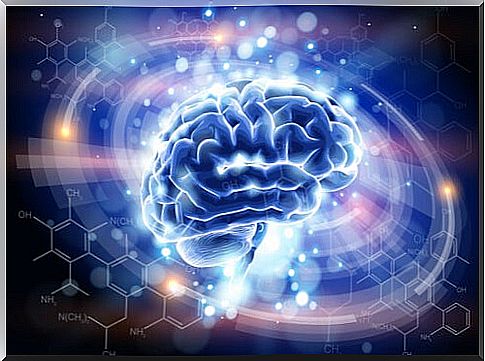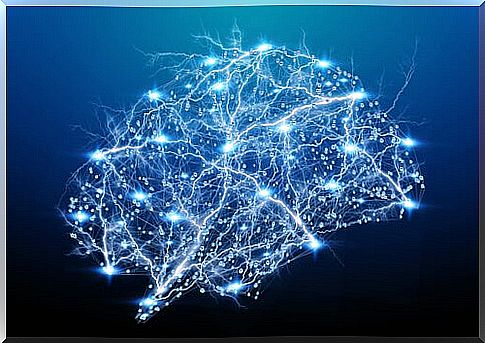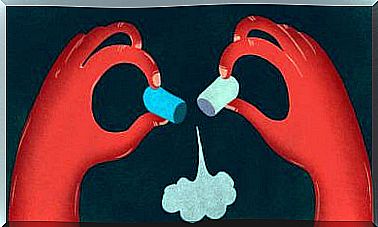Encephalins, Neurotransmitters That Fight Pain

For more than three decades, the role of enkephalins in pain transmission has been studied . These are hormones that act as neurotransmitters, causing neurons to communicate with each other.
Encephalin is a hormone produced in certain areas of the brain and in the pituitary or pituitary gland. This is how it is released to distribute to other areas of the body, such as the gastrointestinal tract or the adrenal medulla.
The discovery of endogenous opiates and the recognition of their importance in brain function, homeostasis and neuroendocrine regulation has been one of the great events of modern biology. With this, the discovery of these types of hormones, such as enkephalins in the periaqueductal gray matter and the spinal cord, supports the idea that these systems could participate in the transmission of sensory information related to pain.

How are enkephalins developed?
Opioid peptides are so called because they bind to the same receptors that opioids bind to. Also because they share some pharmacological properties of morphine, which is also an opiate.
Encephalins are distributed throughout the brain, but the greatest binding capacity is in the nerve terminals of the midbrain and thalamus, where the conducting bundles of pain sensation meet.
Encephalins are also found in the amygdala, which has to do with the feeling of well-being of metabolism, the mechanism of action and the main effects on the body of enkephalins and endorphins.
The amino acid sequence of enkephalins are present in longer peptides, extracted from the pituitary. Later the major peptides, endorphins, were also detected in nerve cells. Thus, endorphins are 12 to 100 times more active than enkephalins.
Mechanism of action of enkephalins
According to research, enkephalins inhibit the two afferent pain fibers, type C and type A, presynaptically and postsynaptically. Like opiates, enkephalins inhibit neuronal activity by decreasing sodium permeability.
In addition, enkephalins cause prolonged changes in the metabolism of cells. They do so by causing:
- Changes in the deactivation or activation of certain genes in the cell nucleus
- Alterations in the number of inhibitors or excitators.
Effects of enkephalins on the CNS
Encephalins work in various ways in the central nervous system. These are the following:
- Analgesia.
- Euphoria.
- Myosis
- Depresses the cough reflex.
- Nausea and vomiting
- Tremors (high doses).

Effects on the cardiovascular system
Encephalins don’t just play a role in the brain. They also have it in the cardiovascular system, causing in this bradycardia:
- Histamine (morphine) release.
- Arteriolar and venous dilation (orthostatic hypotension).
The frequency and intensity with which acupuncture points are stimulated has to do with these effects on the central nervous system and the cardiovascular system. For example (3):
- Low-frequency and high-intensity stimuli (between 2 and 8 Hz) cause the release of b-endorphins at the level of the hypothalamic-pituitary axis and of enkephalins in the brain and spinal cord. These stimuli have a systemic action and are used to treat chronic diseases. In addition, they present a local effect given by the opening of the precapillary sphincters, improving local microcirculation, a decrease in local halogens (bradykinin and serotonin) with an increase in tissue metabolism.
- High-frequency, low-intensity stimuli between 100 and 200 Hz cause the release of enkephalins in the midbrain and spinal cord. In the presence of stimuli above 500 Hz, dynorphin is released. These stimuli have segmental action and are used in acute diseases.
So, it seems that enkephalins have a lot to do with pain : they cause analgesia, that is, they relieve it. These are sedatives similar to morphine. A great discovery for pain-related diseases.









